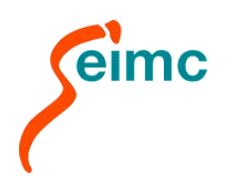Conventional culture has been for a long time the gold-standard for diagnosing bacterial gastroenteritis. However, the viability of bacteria may be reduced by extended storage, suboptimal transport conditions of the sample, presence of competing commensals and the prior use of antibiotics.1 Therefore, many laboratories have been looking into new syndromic-based techniques for primary screening for bacteria that cause infectious gastroenteritis.2 Due to suboptimal accuracy of Luminex GPP,3,4 BioFire GPI and Verigene EP5 assays has been reported for Salmonella spp. detection compared to conventional methods, we evaluated the performance of the new multiplex PCR assay Allplex™ GI-Bacteria-I Assay (Seegene). This assay simultaneously detects 8 bacterial species6 and was compared with our routine selenite enrichment broth medium (Oxoid) and subsequent plating onto Salmonella-Shigella agar (bioMérieux). Between May 2018 and December 2018 a total of 5744 diarrheic stool samples collected from 4754 patients were processed by multiplex PCR and inoculated on selenite broth. The nucleic acid extraction and PCR setup were performed with the Microlab STARlet system (Hamilton). The identification of suggestive colonies grown on Salmonella-Shigella agar was performed by MALDI-TOF (Brucker Daltonics). The selenite broth detected 113 samples from 111 patients with Salmonella spp. and the Allplex-GI-Bacteria, 104. An analysis of discordant results showed that the selenite broth medium detected 16 Salmonella spp. that the Allplex-GI-Bacteria did not detect and 9 Salmonella spp. were missed with selenite broth but were detected with the Allplex-GI-Bacteria. Considering the culture as the gold-standard the Salmonella spp. PCR reveals a sensitivity of 85.6% (95% CI: 0.7776–0.9103), specificity 99.8% (95% CI: 0.9969–0.9992), positive predictive value 91.3% (95% CI: 0.8418–0.9557) and negative predictive value 99.7% (95% CI: 0.9954–0.9983). To assess the analytical sensitivity of both methods, controls of a 0.5 MacFarland of Salmonella enterica type culture provided by the Sociedad Española de Enfermedades Infecciosas y Microbiología Clínica were prepared in saline serial dilutions and adjusted to contain a known number of CFU/ml. When triplicate serial dilutions were tested, the limit of detection of PCR and selenite broth were 103CFU/ml and 10CFU/ml, respectively. Although PCR provides earlier diagnosis, selenite enrichment broth is more sensitive than the Allplex-GI-Bacteria PCR for the detection of Salmonella spp. Allplex-GI-Bacteria showed higher sensitivity than reported for Luminex GPP (79.2%) and Verigene EP (83.3%) but was less sensitive than the nested-PCR approach of BioFire GP (95.8%).5 On the other hand, there are also some contradicting reports: Martín et al.6 reported that the Allplex-GI-Bacteria panel demonstrated superior sensitivity for Salmonella spp., this disagreement could be explained by the different sensitivity of the commercial selenite broth media used in our report and the in-house selenite broth medium used by Martín et al. Yoo et al.7 also demonstrated greater sensitivity for Luminex GPP than conventional methods but after an agreement analysis were considered false positive results. In our study 8.6% (9/104) yielded only PCR-positive results that would be missed by selenite enrichment alone, probably due to the presence of non-viable bacteria as a result of extended or inadequate storage of the sample or prior use of antibiotics. In contrast with other cultivable bacteria causing gastroenteritis such as Campylobacter spp. or Yersinia spp., the lower sensitivity in Salmonella spp. detection with most of the gastrointestinal infection syndromic panels might be due to the use of enrichment broth media that increases bacterial load and recovery. Until PCR methods are as sensitive as conventional culture, the combination of PCR technology plus enrichment broth is advisable for an optimal laboratory diagnosis of gastrointestinal infection by Salmonella spp., especially when patients report compatible clinical and epidemiological findings.
Información de la revista
Vol. 38. Núm. 4.
Páginas 201 (abril 2020)
Vol. 38. Núm. 4.
Páginas 201 (abril 2020)
Letter to the Editor
Acceso a texto completo
Syndromic panel-based real-time PCR versus selenite enrichment broth for the detection of Salmonella spp. in fecal samples
Panel sindrómico de PCR a tiempo real versus medio de enriquecimiento del selenito para la detección de Salmonella spp. en muestras de heces
Visitas
2291
Información del artículo
Texto completo
Dear Editor,
References
[1]
P. Van Lint, E. De Witte, J.P. Ursi, B. Van Herendael, J. Van Schaeren.
A screening algorithm for diagnosing bacterial gastroenteritis by real-time PCR in combination with guided culture.
Diagn Microbiol Infect Dis, 85 (2016), pp. 255-259
[2]
M.J. Binnicker.
Multiplex molecular panels for diagnosis of gastrointestinal infection: performance result interpretation, and cost-effectiveness.
J Clin Microbiol, 53 (2015), pp. 3723-3728
[3]
R. Khare, M.J. Espy, E. Cebelinski, D. Boxrud, L.M. Sloan, S.A. Cunningham, et al.
Comparative evaluation of two commercial multiplex panels for detection of gastrointestinal pathogens by use of clinical stool specimens.
J Clin Microbiol, 52 (2014), pp. 3667-3673
[4]
E. Wessels, L.G. Rusman, M.J. van Bussel, E.C. Claas.
Added value of multiplex luminex gastrointestinal pathogen panel (xTAG® GPP) testing in the diagnosis of infectious gastroenteritis.
Clin Microbiol Infect, 20 (2014), pp. O182-O187
[5]
P. Ramanan, A.L. Bryson, M.J. Binnicker, B.S. Pritt, R. Patel.
Syndromic panel-based testing in clinical microbiology.
Clin Microbiol Rev, 31 (2017),
[6]
A. Martín, A. Pérez-Ayala, F. Chaves, D. Lora, M.Á. Orellana.
Evaluation of the multiplex PCR Allplex-GI assay in the detection of bacterial pathogens in diarrheic stool samples.
J Microbiol Methods, 144 (2018), pp. 33-36
[7]
J. Yoo, J. Park, H.K. Lee, J.K. Yu, G.D. Lee, K.G. Park, et al.
Comparative evaluation of seegene allplex gastrointestinal luminex xTAG gastrointestinal pathogen panel, and BD MAX enteric assays for detection of gastrointestinal pathogens in clinical stool specimens.
Arch Pathol Lab Med, 143 (2019), pp. 999-1005
Copyright © 2019. Elsevier España, S.L.U. and Sociedad Española de Enfermedades Infecciosas y Microbiología Clínica







